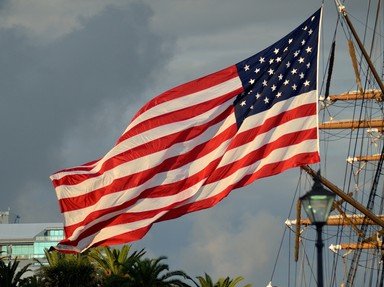Quiz Answer Key and Fun Facts
1. Wedowee, Alabama. Man, like, how do you even PRONOUNCE that? Well, phonetically, it would be sort of like this: Wee-DOW-wee.
Its name can be traced to the Native American Creek Indian language. What did the word 'wedowee' mean, in that tongue?
2. The Treaty of Dancing Rabbit Creek was the first incident of the removal of Native American peoples from their homelands. What city in Mississippi stands in the location of Dancing Rabbit Creek?
3. Muscogee? Cherokee? Hopi? Mohawk? Tellico Plains? Who would have thought of a town in the hill country of eastern Tennessee to be lying in the "plains"?
For that matter, what on earth is a 'Tellico', anyway? And which native American tribe provided its name?
4. What's this? A southern town whose name can mean either "mouth of the rat" or "inlet which contains rugged rocks on the bottom"?
Where in Florida would you expect to find this place?
5. Ah, those railroad folks! They were responsible for the naming of several cities and towns throughout the southeast as well as other parts of the US, and this one is no exception. Durham, North Carolina received its name courtesy of North Carolina Railroad, but can you tell me WHAT it was named in honor of?
6. Tangier, Virginia is located on Tangier Island. The Pocomoke Indians used the area as a summer gathering place prior to the arrival of the new inhabitants, Europeans who named it "Tangier". Where did these newcomers to the area hail from?
7. Cordele, Georgia was named for which of the following?
8. In the language of the Muscogee Indians, the name of the area known today as Opelika, Alabama originally meant "large swamp".
9. There is a town in Arkansas that has such a unique name that NO OTHER place in the world shares its name. Marked Tree, Arkansas is a stand-alone kind of place, but my question is this: How did it acquire such an unusual name?
10. Thibodeaux, the self-proclaimed "Queen City of Lafourche" ... Lafourche Parish, that is, located in Louisiana. The name Lafourche is from the French word for "fork", a reference to the flow of the Mississippi River in that region.
Can you tell me where the city of Thibodeaux itself got ITS name from?
Source: Author
logcrawler
This quiz was reviewed by FunTrivia editor
Pagiedamon before going online.
Any errors found in FunTrivia content are routinely corrected through our feedback system.
